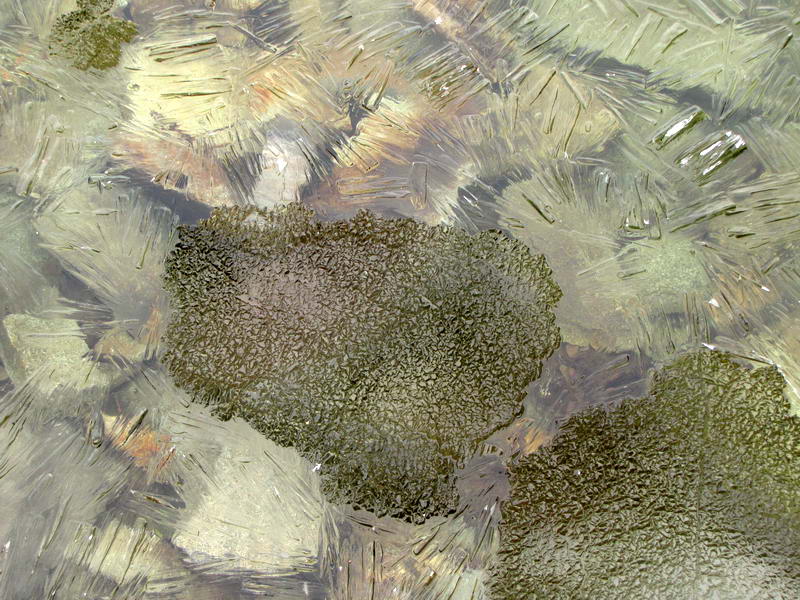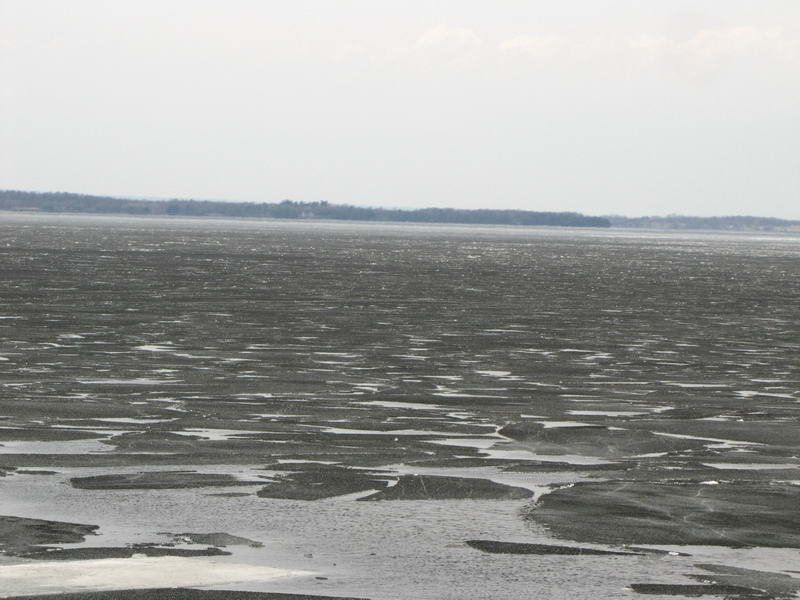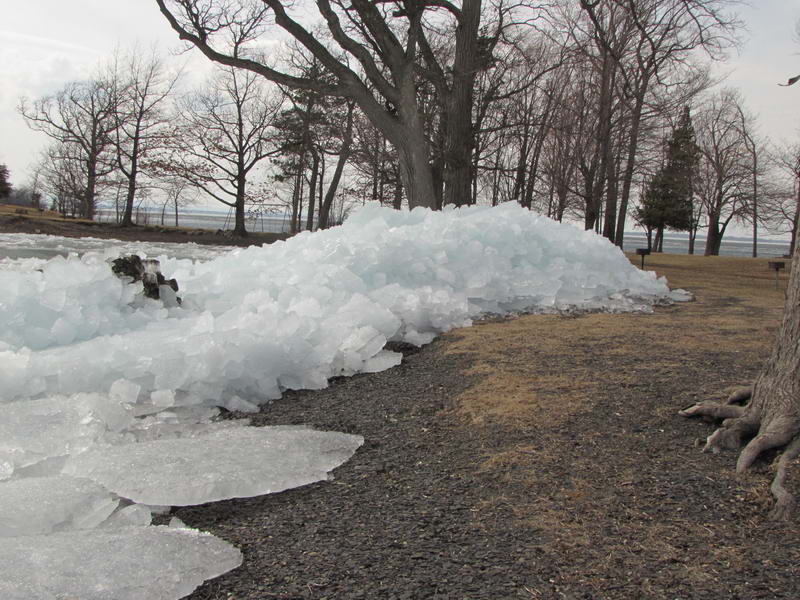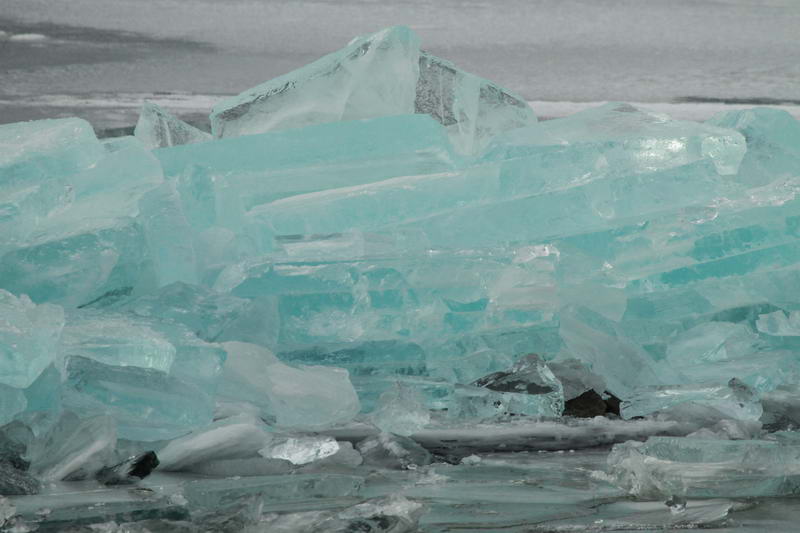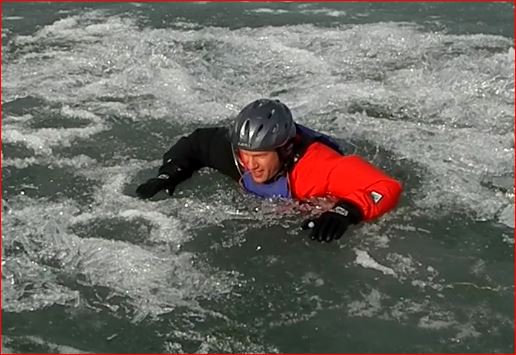
14" ,stage 6, rotten candled ice with a properly attired swimmer (dry suit, life jacket, warm clothes, ice claws, and a friend with a throw rope).
Spring is a very popular time to get wet and it often occurs when people are trying for one more day on the ice. While much of the ice belt has melted there is still ice in the northern Midwest, Canada as well some higher elevation lakes in northern New England.
Thick, fine grained ice evolves into an especially weak form of ice usually called 'candled ice'. NOTE: when this post was originally written two weeks ago I call this 'Mattress Ice'. A closer reading of the Swedish definition of their word 'madrassis' refers to ice with larger grain size that behaves very differently in a breakthrough. True Mattress ice is also rarely experienced as it only occurs on very rotten ice sheets.
The crystals of candled ice are irregular rods that are vertical and are often as long as the ice sheet thickness. The crystal boundaries have melted completely and they are held together largely by the fact that they are all stacked together. When weight is applied to the ice surface, it gives a little as the crystals shift a small amount (0.2"?). Some times this will hold you (thaw stage 5), some times it won't (thaw stage 6).
The following are three stories of breakthroughs on rotten candled ice.
1) Three days ago a fishermen who was sure there was 16" of ice and he felt the need for one more day on the ice. We were 10 days into spring thaw with 60 thaw degree days at that point (enough to melt several inches of thickness). About a mile off shore he stepped on some dark weak ice (candled ice). He was lucky to only get one leg wet and not to fall through again on the way back in. Rotten candled ice often results in one leg break throughs (maybe 30% of the time for for cautiously walking people).
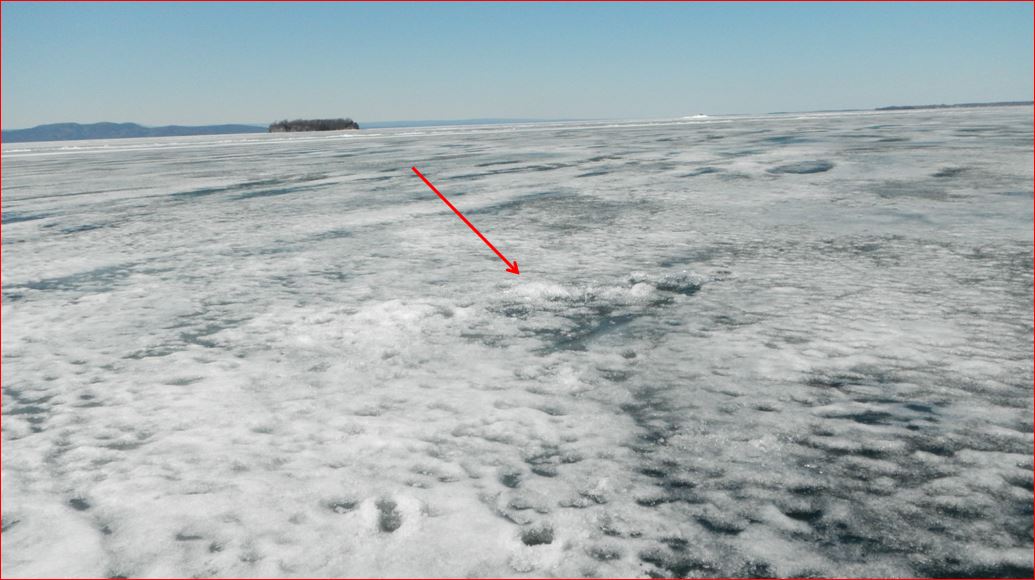
2) Yesterday, a couple hundred feet from shore on the same ice the fisherman was on, I stepped through the a patch of rotten candled ice shown in the picture above. By leaning to the side as I went in I avoided getting wet above my legs (and, of course, I had my dry suit, life jacket, neoprene gloves, and several people within shouting range). As you can see from the picture, with the residual white crust, it is hard to see the grain size. This ice is way past being reasonable for recreational uses.
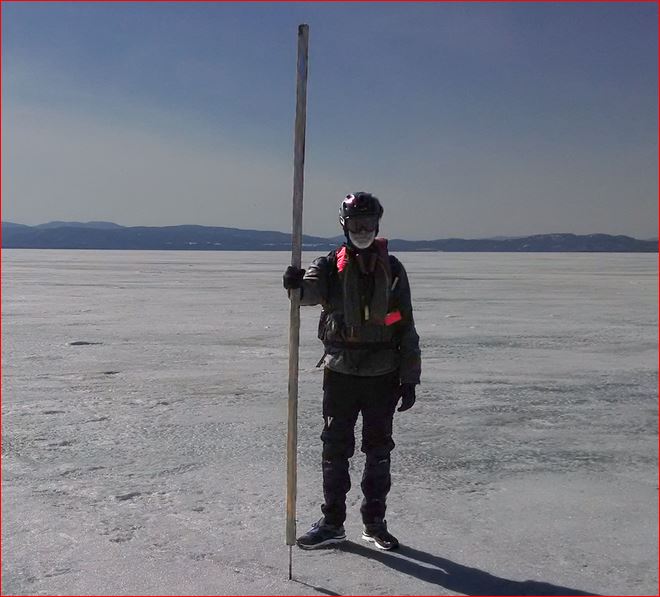
My 8.5 foot test pole has great reach and is usually pretty effective at identifying weak ice but with thick, very weak ice the pole will blast through most everywhere with a hard jab. The lighter Swedish test poles work a little better at indicating what ice is likely to hold you what ice will not.
3) Today I met a fisherman who was planning to fish from shore, having fallen in on rotten candled ice a few years ago. His swim was at Sandbar State Park. He had walked about half a mile out before falling in. He got himself out, drove 20 miles back to home and never even put his bait in the water. He did not tell anyone for a couple years for fear of how stupid his friends would think he was.
Rotten candled ice is especially tricky when it is cold enough to set up a little overnight ice. That lets you get out on the ice that feels feels strong before it gets weak as the sun rethaws the overnight ice.
Bob
 Monday, May 26, 2014 at 08:25PM
Monday, May 26, 2014 at 08:25PM  robertdill | Comments Off |
robertdill | Comments Off | 